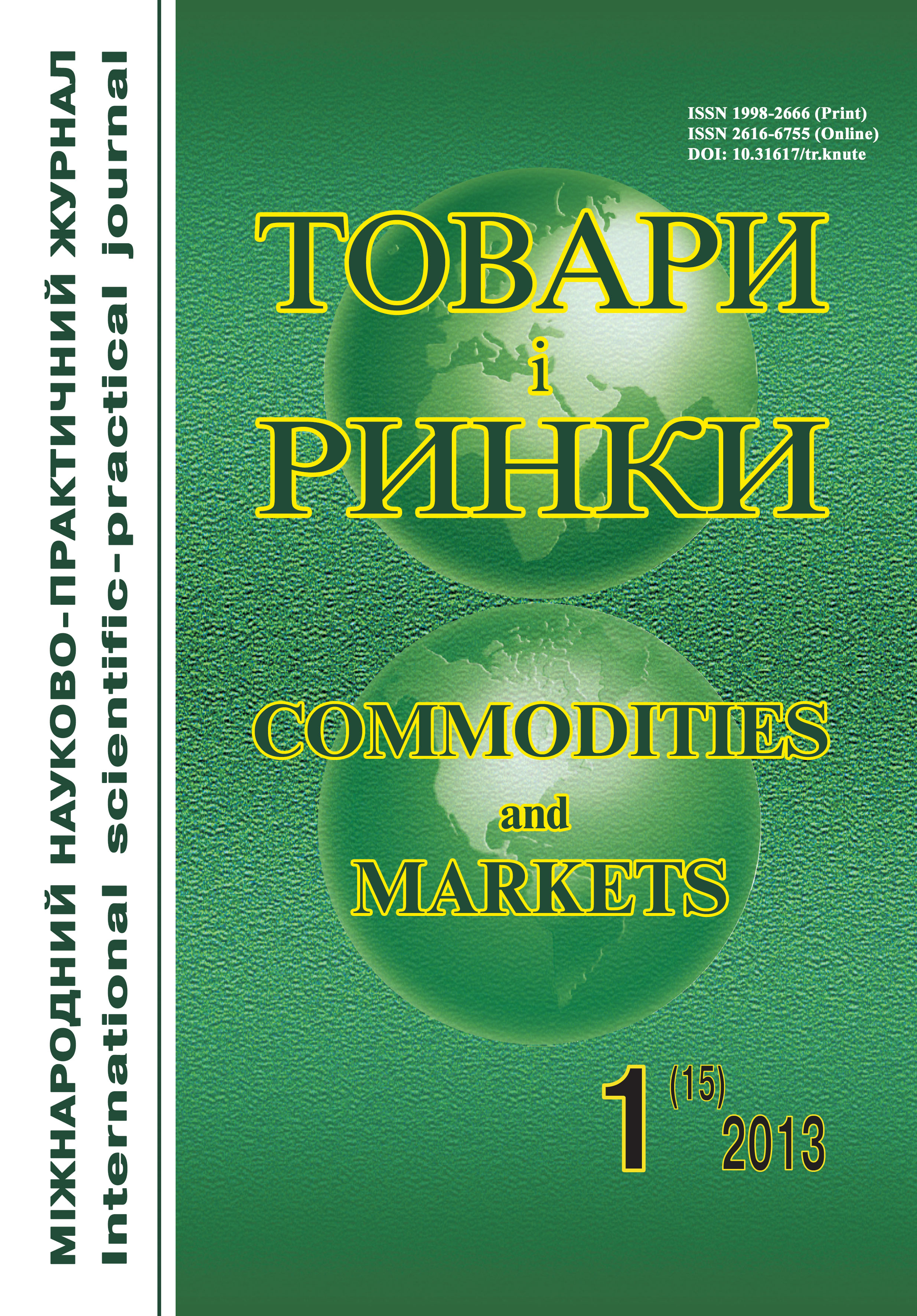Express methods of studying butter composition
Keywords:
butter, spreads, thermal methods of studying, electrical methods, optical methods, penetration, digital methodsAbstract
Background. The identification of counterfeit products in the distribution network is relevent. An important aspect of the problem is the need for rapid methods of detecting fraud, and in particular butter. Having analyzed the work of scientists it was found that patterns of heat change indicator of butter under the influence of thermal field and its rheological properties had not been studied enough, and that defined purpose of the study.
Material and methods. The test specimen – extra butter with 82.5%fat, which according to the requirements ISO 4399:2005 must not be substituted with milk fat replacer: TM Yahotynske, Tulchynka, Gold; hand churned butter.
Coefficient of thermal proof was determined by the VNDISMP method and UkrNIMMP [7] Surface temperature was observed non-contact by means of infrared laser pyrometer DT-8855 with wireless module DT-EM.
Grain of water inclusions was determined with digital microscope with USB-interface BW-400X (optical zoom 25-65h, digital – to 4, camera resolution 2048x1536 px). Analysis and processing of images was done with the software (SW) Micro-Measure 1.2. The change of thermal conductivity on the thermal field changes by cooling was determined by the Hrystiansen method [7], the refractive index – by refractometric method [8], electrical conductivity – using a balanced bridge technique after I. Romanovsky [9], elastic properties – penetration method by using digital equipment ITM [9].
Results. The highest thermal coefficient (0.97) has a hand churned butter, in a sample Gold coefficient is 0.87, Yahotynske – 0.78, Tulchynka – 0.75. The reason for deviation of thermal index defined by microscopic method is water drops and brown inclusions of unknown nature.Thermal conductivity depending on temperature changes of butter during cooling was designed. Uneven heat wave peaks may indicate differences in the chemical composition of samples of butter, such as content of acids, fat, moisture. The difference of moisture content was also confirmed by electro conductivity (the highest is in the sample TM Yahotynske). Refractometric studies have shown the presence of fat in Yahotynske of non-dairy origin (approximately – salomas from sunflower oil), and in butter Tulchynka – refined sunflower oil. The lack of uniformity in the structure of the butter samples was identified by penetration research.
The complex study by physical methods may indicate the content in samples of butter Yahotynske and Tulchynka water added artificially.
Conclusion. We can quickly identify the chemical ingredients of butter and make a conclusion about the presence of fraud due to a set of physical methods. Recommendations for the development of sensors for the express diagnosis of butter and correlation of results with the assessment by standard methods have been prepared.
References
Dunaev A. K. Aktual'nost' i osobennosti proizvodstva kombinirovannogo masla / A. K. Dunaev // Molochnoe delo. — 2005. —No 4. — S. 8—9.
Vyshemirskij F. A. Esli spredy – to tol'ko uluchshennogo kachestva / Vyshemirskij F. A., Dunaev A. V., Karavaeva E. Ju. // Syrodelie i maslodelie. — 2008. — No 2. — S. 50—51.
Rastitel'no-zhirovyh spredah / [Stecenko A. V., Tagiev T. G., Tarasova L. I., Lisicyn A. N.] // Maslozhirovaja prom-st'. — 2006. — No 1. — S. 29—31.
Pavlov I. V. Poluchenie i primenenie zamenitelej molochnogo zhira / I. V. Pavlov, N. V. Dolgunova] // Molochnaja prom-st'. — 2006. — No 2. — S. 54—55.
Mogyljans'ka N. O. Vyznachennja roslynnyh zhyriv v vershkovomu masli / Mogyljans'ka N. O., Lysogor T. A., Diduh N. A. // nauk. pr. ONAHT, vyp. 38, T. 2. — 2011. — S. 268—274.
Analiz metodiv ne rujnivnogo kontrolju vologosti geterogennyh dyspersnyh dielektrykiv / [Kuharchuk V. V., Bogachuk V. V., Govor I. K., Granjak V. F.] //
Avtomatyka ta informacijno-vymirjuval'na tehnika. Visnyk Vinnyc'kogo politehnichnogo instytutu. — 2009. — No 5. — S. 7—14.
Bazhanov V. A. Zavisimost' otnositel'noj dijelektricheskoj pronicaemosti slivochnogo masla ot stepeni dispersnosti vodjanoj fazy / V. A. Bazhanov, B. V. Korneljuk. — Jaroslavl' : TFI-Press, 1970. — 10 s.
Inihov G. S. Metody analiza moloka i molochnyh produktov / G. S. Inihov, N. P. Brio. — M. : Pishhevaja prom-st', 1971. — 71 s.
Forostjana N. P. Metodychni vkazivky do vykonannja students'kyh naukovo-doslidnyh robit na UVKP / N. P. Forostjana, R. P. Romanenko. — K. : Kyi'v. nac. torg.-ekon. un-t, 2013. — 92 s.
Ginzburg A. S. Teplofizicheskie harakteristiki pishhevyh produktov / Ginzburg A. S., Gromov M. A., Krasovskaja G. I. : spravochnik. — M. : Agropromizdat, 1990. — 287 s.



